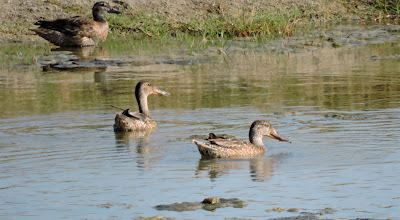booted eagle 1 (by Saeed Shanfari)
Saeed Shanfari took some excellent pictures and I am gratefully he is allowing me to reproduce two of them here.
booted eagle 2 (by Saeed Shanfari)
common whitethroat
I go into the town mostly to look in the marina and on the beach for seabirds.
lesser crested tern
Lesser crested tern were the least ordinary this time. They are winter visitors to Dhofar.
mixed sea birds
I am ever hopeful and being so far west I was on the look-out for rarities. Unfortunately I couldn't turn any of the slender-billed gull into grey-headed gull (a vagrant from Africa).
slender-billed gull
We didn't stay too long in the town. On the way out but just before the climb up, we again stopped off in a wooded area. This one was packed full of birds including African paradise flycatcher, Abyssinian white-eye, Ruppell's weaver and European golden oriole.
rock hyrax (by Saeed Shanfari)
blue-cheeked bee-eater 1
On the other side of the road and a little further up was my first sighting of a blue-cheeked bee-eater this season.
blue-cheeked bee-eater 2
Climbing further up the mountain, we came across our third Bonelli's eagle of the weekend.
Bonelli's eagle 1 (by Saeed Shanfari)
Bonelli's eagle 2 (by Saeed Shanfari)
I believe the density of Bonelli's eagle is high in the far west.
On the way back to Salalah, we visited Mughsail. This area can be very productive for rare birds. However this time, it was not special. Rare birds are just that. They are never guaranteed.
northern shoveller with garganey (at back)
Ducks were limited to northern shoveller, garganey and northern pintail.
northern pintail
Waders included common redshank and common greenshank both on the beach and in the first inland khawr.
common redshank with moorhen
The only drama occurred when a marsh harrier arrived on the scene. As usual birds scattered in all directions.
marsh harrier (by Saeed Shanfari)
Overall it was an excellent weekend. I look forward to birding with Saeed Shanfari and Hedi Khecharem again. Our team worked well.


























































